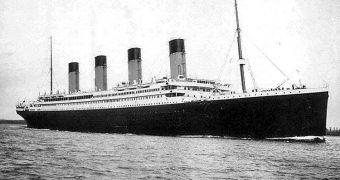The Moon may have played an important role in the loss of the Royal Mail Ship (RMS) Titanic, a team of experts now proposes. They say that a very rare lunar event caused a night of very big tides on January 4, 1912, forcing the large chunk of ice that impacted the ship to separate from the Arctic.
The Olympic-class vessel collided with a very large glacier on April 14, 1912, at around 11:40 pm local time, in the North Atlantic. A few hours later, she sank with 2,223 people on board, of which only a very few survived and were rescued.
Part of the reason why the Titanic was doomed was that it collided with the glacier at an unusual angle. Due to the trajectory of the ship, the ice mass ripped apart many of its hull plates along the starboard side, exposing 5 hull compartments to the ocean.
The ship was never designed to float with more than 4 fully-flooded compartments, so the crew immediately realized that the ship was about to sink. By 2:20 am on April 15, the Titanic was gone.
Texas State University astronomers David Olson and Russell Doescher now propose that a very rare lunar event was responsible for high tides on January 4, 1912. These tides contributed to the calving of the glacier that would go on to hit the “unsinkable” ship three and a half months later.
Their proposal was met with skepticism by others in the scientific community, Space reports.
However, the team says that such an occurrence would explain why such a large iceberg made it south of Newfoundland by mid-April, allowing it to intercept the ship as it was heading for New York City.
“The lunar connection may explain how an unusually large number of icebergs got into the path of the Titanic,” Olson explains. He adds that January 4 marked a time when the Moon was closest to Earth in more than 1,400 years.
Since the natural satellite is the main driver of Earth's tides, it stands to reason that very high tides were generated by this close approach. In addition, the Moon was full that night, creating a conjecture called a “supermoon" event.
Furthermore, an alignment between the Moon and the Sun also occurred at the exact same time, causing Earth to experience an even more intense tidal force. These configurations “maximized the Moon's tide-raising forces on Earth's oceans,” Olson concludes.

 14 DAY TRIAL //
14 DAY TRIAL //